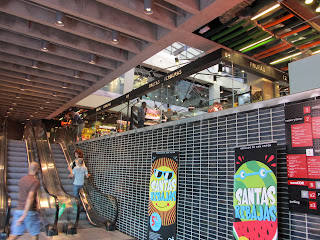While sorting through a stack of used books at an outdoor bookstand the other day, I came across a copy of the latest issue of Revista de Occidente, a journal dedicated to arts and culture that holds a fair amount of prestige in Spain (it was founded in 1923 by philosopher José Ortega y Gasset). This particular issue caught my eye because it includes an interview with Adam Zagajewski, a contemporary Polish poet whose work (as translated into English by Clare Cavanagh) I have become familiar with over the last few years. Following the interview the journal includes five of Zagajewski’s poems in Spanish translation.
Zagajewski has become quite well known in the U.S.—he currently teaches at the University of Chicago, and before that he taught at the University of Houston. His poem, “Try to Praise the Mutilated World” [“Spróbuj opiewac okaleczony swiat”; in Spanish “Intenta alabar al mundo herido”] appeared in The New Yorker on September 15, 2001, providing a timely (though unplanned) response to the events of 9/11. (You can read Cavanagh’s English translation here.) The tenth anniversary of that day will find me in Spain, and therefore it seemed fitting to read Zagajewski’s poem again, this time through the lens of a different language.
The first thing that strikes me is the beauty of the Spanish sounds. In the English, I love the repeated hard “a” of “praise” and “mutilated”—the echoed stress drives home, from the first line, the imperative character that runs through the poem, as it asks the reader to “try” and to “praise.” In Spanish the vowels are more rolling, joining syllables and communicating this necessity of “praising” by making the words aurally contingent upon one another: “Intenta alabar al mundo herido” sounds “In-ten-tal-a-bar-al-mun-dohe-ri-do.”
In English, what jumps out at me are the images of this poem—things that the poet incites us to appreciate: “wild strawberries, drops of wine,” leaves eddying over “earth’s scars,” “the grey feather a thrush lost,” the “gentle light.” However, reading this Spanish translation I notice—probably due to the fact that I have taught Spanish grammar for the last few years—the way the poem builds its imperative, from the somewhat passive “try to praise” (“intenta alabar”) to “you must” (“debes”) to “you should” (“deberías”), and finally, the outright command: “Praise” (“Alaba”).
As I recognized these different modulations in Spanish, particularly the subtle shading of "debes" vs. "deberías," the translation deepened my appreciation of its urgency, its sense of necessity: praising this mutilated, wounded (“herido”) world needs to happen. I think the poem suggests that this is (in part) art’s responsibility; art must extol, edify, and rejoice over this world despite its brokenness, it must eddy—a lovely word choice by Cavanagh; it makes me wish for the Spanish equivalent, arremolinarse, in Elzbieta Bortkiewicz Morawska’s translation—over the earth’s scars.
What about praising a mutilated America? A country that makes mistakes, goes into wars hastily, one whose actions in the world have often been imperialistic? A country whose Congress has lately been dysfunctional? I confess, being in the honeymoon period of my stay in Spain, I can find this hard to do at times. (Although, to be honest, many of the same charges can be leveled at Spain.) Zagajewski’s words in the interview provide a helpful perspective. When asked about the differences between Europe and the U.S., he responds:
En Europa todo el mundo está ¡tan cansado por la historia!... América, por el contrario, tiene la fuerza de su relativa juventud, los americanos aún están dispuestos a luchar. A menudo se equivocan, porque cometen grandes errores; sin embargo, el mero hecho de que los ideales de Homero—como, por ejemplo, la defensa de la patria—sigan estando allí tan presentes, hace que para ellos el tener que defenderse sea algo perfectamente posible y vigente, algo asumido. Y es eso lo que me maravilla.
[In Europe everyone is so tired by history! America, by contrast, has the force of its relative youth, the Americans are still willing to fight. They are often wrong, because they make big mistakes; however, the very fact that the ideals of Homer—like, for example, the defense of one’s country—continue to be so present there makes having to defend oneself, for them, something perfectly possible and valid, something assumed. And that is what astounds me.][my translation]
PS. On a tangential note, the title of Zagajewski’s poem in English shows up in this song by my favorite band, Over the Rhine--"All My Favorite People Are Broken." The picture in this video is dark, but the audio’s pretty good.
















